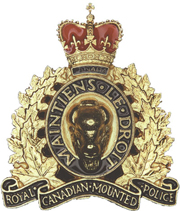 THUNDER BAY – Crimebeat – Playing in the outdoors means knowing the risks, and always having a plan. The RCMP would like to remind all users of provincial waterways, to plan ahead and stay safe while enjoying the lakes and rivers throughout our province everyday, and of course, for the remainder of the season.
THUNDER BAY – Crimebeat – Playing in the outdoors means knowing the risks, and always having a plan. The RCMP would like to remind all users of provincial waterways, to plan ahead and stay safe while enjoying the lakes and rivers throughout our province everyday, and of course, for the remainder of the season.
The hot weather that we have been experiencing throughout Alberta and across Canada has drawn numerous people to the banks of the rivers, as well as to lakes.
Sadly, a number of people have lost their lives swimming, and from boating accidents this year. Many of the deaths and near fatal accidents that have occurred in our province this summer could have been prevented if proper safety equipment, physical awareness, and good solid planning were all put in place.
Know the risks.
Everyone, whether swimming or boating, needs to evaluate his or her personal strengths when in, on, or near the water. Everyone, especially weak or non-swimmers, are strongly encouraged to wear a life jacket or, an approved personal floatation device, at all times.
Should you run into anything unexpected, such as a current or hidden obstruction, wearing this piece of safety equipment will certainly improve your chances of surviving any unexpected difficulties. If you are traveling with others, it is critically important to know the capabilities of everyone in your group. A drowning person will sometimes bring others down with them in his or her panic.
Knowing rescue skills is extremely important before jumping into the water in any rescue attempt. RCMP cannot stress enough that a bright-coloured industry approved life-jacket is everyone’s best defense against drowning.
“One would think as an able swimmer, and a trained boat operator with water rescue experience, that I would feel very comfortable around water”, shared Staff Sgt. Shawn LeMAY of the Alberta’s RCMP. “Truth is, you can never be too comfortable. I can assure you that, when it comes to open water, I take nothing for granted. You have to have a huge amount of respect for waterways, and never underestimate the danger…..never jump into unknown waters and always be prepared with lifesaving equipment nearby”.
Know your surroundings!
Never jump into unknown waters. The Bow River for example, has many dams and weirs used to control flow and drops in the river. Weirs are extremely dangerous as it can be very difficult to exit from the current that is pulling you into the weir both before going over, and once down on the other side. Recent experience tells us that water rescues by Emergency Personnel are routinely required to extract someone from the pull of a weir.
The rivers in Southern Alberta are still running at high levels. There are many recommendations about safety when water levels are this high, and the RCMP encourages you to know the recommendations, and any restrictions, before heading out.
Putting into action water safety skills will save your life, and the life of one of your friends or family. Wear the equipment, and play safely on our waterways!
Plan your trip
When venturing outdoors for recreational activities, always have a plan and let someone know where you are going. Having and sharing an itinerary will save a life. No matter what you are doing, whether it be hiking, swimming, boating or any other activity, follow some of these tips to stay safe….
– research and assess your environment;
– assess your abilities accordingly;
– plan your activity to include safety equipment and survival gear if required;
– always have a piece of identification with you;
– bring a cell phone with a fresh battery; and
– tell someone where you are going, and when you should be expected back.
“The thing is, no matter what, when someone’s in trouble we are coming for them, and emergency services will always put the necessary resources in place to help when needed, which often puts at risk the lives of the rescuers”, said Staff Sgt. Shawn LeMAY, of Alberta RCMP’s “K” Division. “While accidents do happen, many near-tragedies and the loss of lives are preventable, and too often the result of poor decision-making”.
